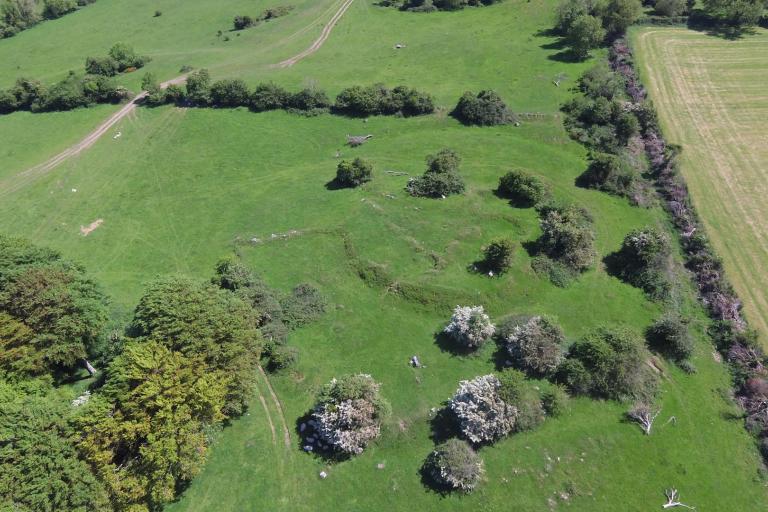Hill of Uisneach

Hill of Uisneach
Co. Westmeath
The Hill of Uisneach in Westmeath is renowned in early Irish tradition as the centre of Ireland and meeting point of the ancient provinces. The iconic Cat Stone (a large glacial erratic) on the western slope of Uisneach, is also known as Ail na Mireann (‘The Stone of Divisions’).
There are over 35 archaeological monuments on the Hill. These include burial monuments and enclosures, standing stones, ringforts and an embanked roadway. The earliest monument is thought to be a Neolithic Passage tomb and is often called ‘St Patrick’s Bed’. The number and variety of monuments at Uisneach demonstrate its importance as a place of burial, ritual and ceremony over several millennia. Archaeological excavations at Uisneach in the 1920s revealed evidence of high‐status occupation, thought to be associated with assemblies and kingship ceremonies during the early medieval period.
Uisneach also has mythological associations as the domain of gods and goddesses, among them Lugh, the sovereignty‐goddess Ériu, and the Dagda, the great sun‐god and ‘father of all’. The ‘Assembly of Uisneach’ is mentioned in various sagas and legends and, according to medieval tradition, the god Lugh was killed during an assembly at Uisneach. There is also a tradition that the primeval fire was lit at Uisneach by the druid Mide.
Uisneach was the royal seat of one of Ireland’s most powerful medieval dynasties - the (southern) Uí Néill.


